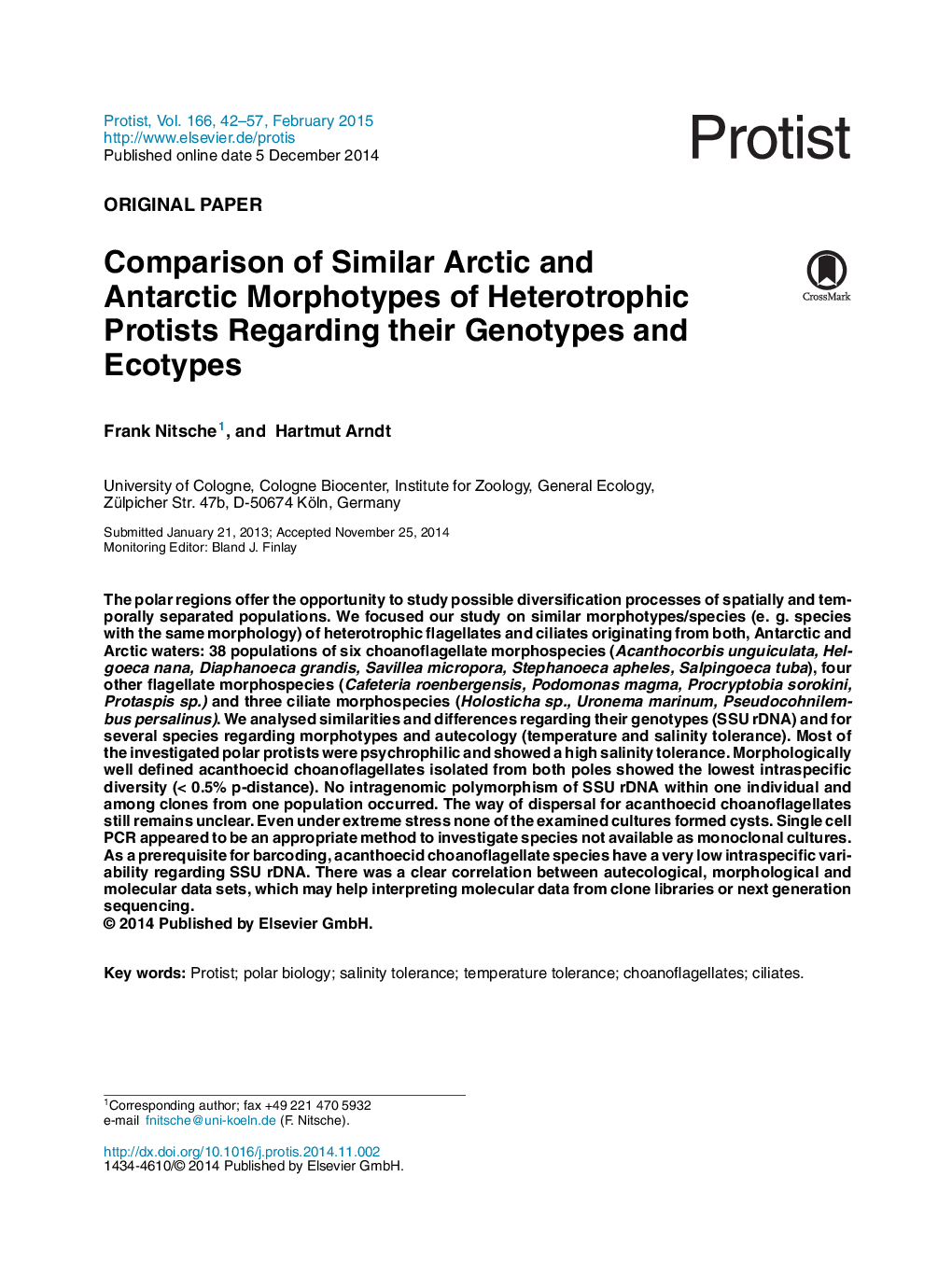| Article ID | Journal | Published Year | Pages | File Type |
|---|---|---|---|---|
| 10879048 | Protist | 2015 | 16 Pages |
Abstract
The polar regions offer the opportunity to study possible diversification processes of spatially and temporally separated populations. We focused our study on similar morphotypes/species (e. g. species with the same morphology) of heterotrophic flagellates and ciliates originating from both, Antarctic and Arctic waters: 38 populations of six choanoflagellate morphospecies (Acanthocorbis unguiculata, Helgoeca nana, Diaphanoeca grandis, Savillea micropora, Stephanoeca apheles, Salpingoeca tuba), four other flagellate morphospecies (Cafeteria roenbergensis, Podomonas magma, Procryptobia sorokini, Protaspis sp.) and three ciliate morphospecies (Holosticha sp., Uronema marinum, Pseudocohnilembus persalinus). We analysed similarities and differences regarding their genotypes (SSU rDNA) and for several species regarding morphotypes and autecology (temperature and salinity tolerance). Most of the investigated polar protists were psychrophilic and showed a high salinity tolerance. Morphologically well defined acanthoecid choanoflagellates isolated from both poles showed the lowest intraspecific diversity (< 0.5% p-distance). No intragenomic polymorphism of SSU rDNA within one individual and among clones from one population occurred. The way of dispersal for acanthoecid choanoflagellates still remains unclear. Even under extreme stress none of the examined cultures formed cysts. Single cell PCR appeared to be an appropriate method to investigate species not available as monoclonal cultures. As a prerequisite for barcoding, acanthoecid choanoflagellate species have a very low intraspecific variability regarding SSU rDNA. There was a clear correlation between autecological, morphological and molecular data sets, which may help interpreting molecular data from clone libraries or next generation sequencing.
Related Topics
Life Sciences
Agricultural and Biological Sciences
Agricultural and Biological Sciences (General)
Authors
Frank Nitsche, Hartmut Arndt,
